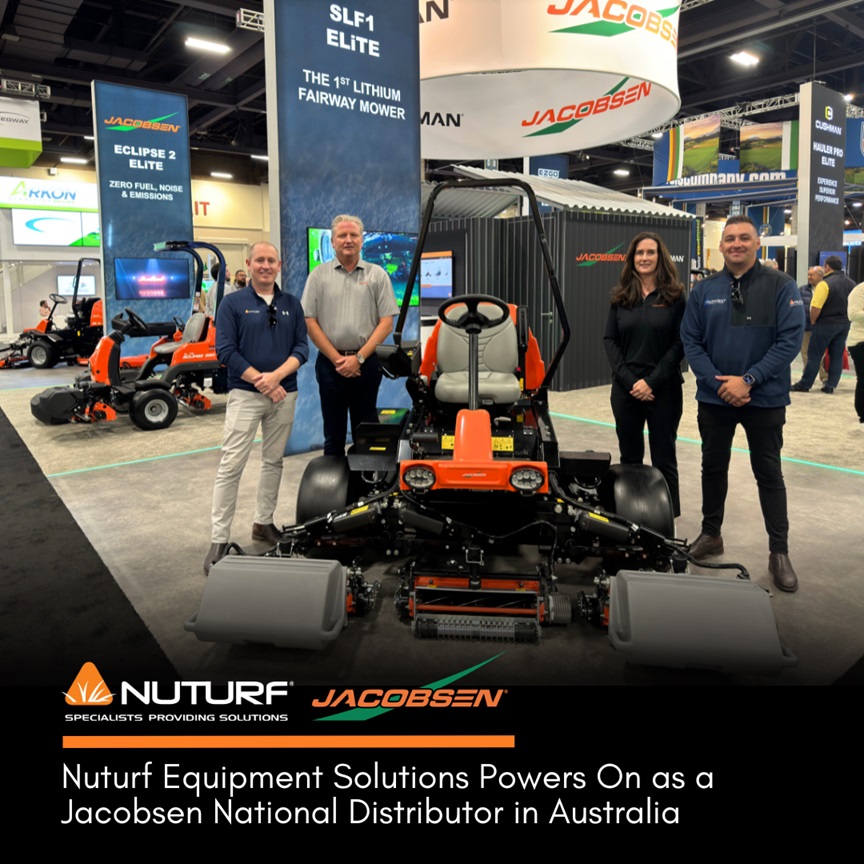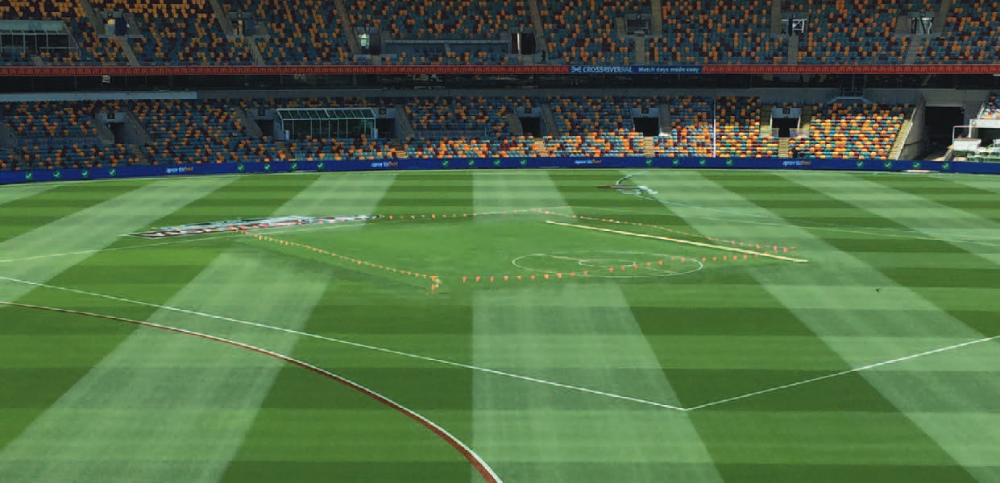How to Manage Algae in Irrigation Dams
Algae management can be an important part of turf management for facilities that use irrigation dams but is often overlooked. The correct management of water bodies in turfgrass facilities is often considered a non-essential practice and is easily misunderstood when allocating management resources in budgeting activities. Water bodies are present as important pieces of functional infrastructure or natural features throughout most market segments of the Australian turd industry. From water storage dams on turf farms to multi-functioning aquatic zones on golf courses, water bodies perform a vast array of important roles.
At turf management facilities, water bodies may perform any of the following functions:
- Reservoirs that collect and store water for irrigation
- Water hazards functioning in the strategic layout of a golf course
- Wetlands and wildlife habitats that enhance the natural environment of the site
- Staggered ponds and dams that function as nutrient sinks in a closed system, cyclic water reuse strategy
An unhealthy water system may compromise any of the above functions, rendering the water body useless and resulting in costly remedial action. As with most other facets of turfgrass management, a proactive approach to aquatic management is generally the most cost-effective. A reactive approach to managing on-site water bodies will often result in unpredictable and unavoidable periods of high financial input and labour to overcome problems, the most difficult and persistent of which can be algal blooms. When it comes to managing water bodies, staying on top of things is vital. Through a proactive management approach, dams can be kept largely algae-free allowing them to function to their full potential.
What are the different types of Algae?
Filamentous algae are the stringy, mat-forming algae that are commonly observed clinging around dam edges. This group of algae present problems as they physically block and clog fittings, deoxygenate the water and reduce the aesthetic quality of the water body.

Unicellular algae (also known as planktonic algae) are small, single-celled algal organisms that will often form a slick on the water's surface. This group of algae includes the cyanobacteria (blue/green algae) which pose a health and safety risk due to the toxic compounds that they generate. Unicellular algae can travel through irrigation systems, blocking nozzles and causing sedimentary buildup on turf surfaces.

Why are Algal Blooms Problematic for Turf Managers?
Physical clogging of pumps, irrigation lines and aerators occurs when algal matter builds up in and around fixtures within the water body. This can cause major damage to irrigation systems and other infrastructure, as well as resulting in irrigation system down time causing possible drought stress on turf surfaces. Filamentous algae tends to pose a risk to inlets and aerators, which the smaller free flowing unicellular algae can build up within irrigation lines, causing blockages and clogging sprinkler nozzles.
Algael cells increase the level of suspended solids which bind to chemistry applications: Increased level of suspended solids occurs during algal blooms, particularly with high populations of unicellular algae. The algal cells become suspended in solution, causing problems during pesticide application by binding to pesticide molecules. For instance, it is understood that glyphosate will be quickly bound up in dirty water as it is attracted to organic particles, including algal cells.
Aquatic life loss: Deoxygenation of water occurs in the water body as algal cells photosynthesise, using oxygen to create carbohydrates. This can quickly deplete the oxygen levels within the water, damaging aquatic life and encouraging anaerobic bacterial activity which generates toxic compounds during anaerobic respiration processes. Fish kill often results from oxygen depletion, and can be the first sign that water quality needs to be addressed. Larger fish will begin to die first as their oxygen requirements are higher. Some fish such as carp can be seen gulping for air at the water’s surface before death occurs; this is a sure sign that oxygen is low and action should be taken.
Increased levels of toxic compounds: Toxic compounds can be released by some varieties of algae. Most commonly these are the cyanobacteria (blue/green algae). This group of algae are unicellular and will create compounds toxic to humans, livestock and wildlife. This presents health and safety issues for staff and clientele and if this algae is suspected an algal count and identification should be undertaken and action should be taken to control the bloom. Some blue/green algae are toxic when in contact with skin, and may be even more dangerous if ingested.
How to Overcome Algal Blooms
Apply an Algaecide
The use of algaecides is often unavoidable if blooms occur. Traditional methods included the application of copper sulphate (bluestone or blue powder) to the water body. Copper is toxic to algae and inhibits various chemical processes within the algal cells, including the electron transport chain in Photosystem 1. While this has often proved effective in controlling algae, the use of copper sulphate has many negative side effects. Copper is a cation with a strong charge and once in the water immediately begins to bond to negative molecules, precipitating out of solution. This renders the copper cation useless in control of the algae and therefore excessive rates of copper sulphate are required, particularly in hard water. When precipitation occurs, the copper compounds then make their way to dam edges, staining lining materials and rocks a blue or black colour. In addition to this, excessive inputs of copper and sulphur into the water bodies can be toxic to aquatic plants and animals, as well as turfgrass that is irrigated with the water.
By using an algaecide based on a complexed or chelated copper, the above problems can be overcome, allowing turf managers to apply algaecides at much lower rates, and with confidence that the impact on the environment will be minimal. Copcide from Amgrow is an example of a complex copper-based algaecide. Delivering the copper to the water body in a complex molecule eliminates the problems associated with hard water and staining, as well as reducing the copper’s interaction with the environment.
Manage Available Nutrients (Nitrogen and Phosphorous)
Nutrient management within the water body is vital in minimising the likelihood of algal blooms. Like all plants, algae require nutrients to grow, particularly nitrogen and phosphorous. By allowing N and P to accumulate through the improper use of fertilisers, turf managers run the risk of encouraging major algal blooms. Regular water testing and monitoring nutrient levels are essential. Following the control of any algae within the water body, it is important to remember that the dead algal cells will result in a major release of nutrients within the water body. This can often cause secondary blooms and nutrient fixing products should be applied to prevent this.
Management Light Intensity and Exposure
High light availability is required for algae to proliferate in dams. By reducing the level of light able to penetrate the water, the environment will become less conducive to algal development. The use of aquatic colourants can assist in lowering light intensity down through the water column, and will often give the water body an attractive deep blue colour. Aqua-Dye from Nuturf is the ideal colourant for use in an integrated algal management plan and is a safe option for the entire aquatic environment.
Aim for cooler water temperatures
Temperature moderation is also an essential tool in managing algae. Most algal species require warm water to develop, and this is easily observed in the concentrations of algae in shallower, warmer areas of the water bodies. By constructing dams with as few shallow banks as possible, the temperature of the water body will likely maintain a cooler temperature.
Ensure the water body is aerated and oxygenated
Aeration of the water body will also assist in preventing algal formation and will help to re-oxygenate the water following blooms. Many algae proliferate in standing water, and the agitation provided by an aeration device such as a central fountain can be enough to prevent blooms from occurring. This can also assist in directing floating algae to dam edges for collection.
An Integrated Algal Management Plan
| Practice | Description | Timing |
| Application of Copcide | Algaecide containing copper complexes. It provides broad spectrum and immediate control of all filamentous and unicellular algae. | Apply immediately following an algal bloom. |
| Aeration of Water Body | Assist in reoxygenating the water if fish kill has resulted. | Oxygenate immediately following a Copcide application. |
| Application of Biostim | 100% natural biological stimulant made of bacterial cultures, enzymes and nutrients that starves out algae and weeds, reduces sludge and cleans up organic waste. | Apply after Copcide application and oxygenation. |
| Monitor | Monitor water body and act as required. Apply further Copcide application if algal blooms persist. | Regularly on an ongoing basis to prevent algal blooms. |
| Water Analysis | Undertake regular water testing to monitor water quality. | Frequency will depend on the nature of the water. Fluctuating sources such as stormwater will require frequent monitoring. |








